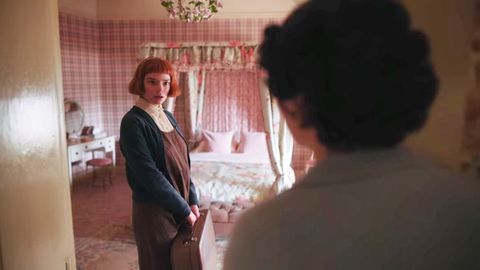You know when you’ve watched something really good, anything else just pales in comparison. After The Queen’s Gambit, I settled into the HBO series, The Undoing. It was not good.
This was not necessarily the fault of the performers. Hugh Grant gave a credible performance of the charm that comes from entitlement and confidence. Donald Sutherland chilled as his over-bearing father-in-law. Nicole Kidman was less convincing as the betrayed wife, as the camera would often linger on her ponderous face without suggesting exactly what it was she was pondering. However, the final episode saw her come into her own as she gave a nuanced performance of a wronged and un-nerved wife in front of the jury.
The wardrobe of Nicole should also be mentioned. The green coat was a particular favourite of mine.

But, the series was a reminder of why I usually steer clear from courtroom or whodunnit dramas. At the centre of the story is a murdered woman. Her body is presented salaciously. Her undoubtedly beautiful face is focused on. We learn she is an artist, but her intellect and her art play no part in the drama (except to provide a murder weapon). She is a hollow character.
The grieving of her husband and her son play some part, but the devastation of loss through homicide is more of a plot device than a real examination of trauma.
Before I left academia, I was working on a project examining Domestic Homicide Reviews and I am all too familiar with how the loss of women’s lives can be sidelined by other characters. In a good review, the reader is left with a sense of a life that was valuable and should have been saved. In some reviews, however, the victim is a shadow, and the drama focuses elsewhere.
Domestic homicide reviews are an opportunity to tell a full story of what led up to the loss of life and to honour that life. However, if not fully realized with the victim centre to all of the narratives, the language rather than engaging begins to provide distance and others victims – they become ‘vulnerable’ ‘service-users’ with ‘chaotic lives’.
The Undoing produced a similar effect, concentrating on the motives of potential murderers and a victim who appeared to engineer her own violent end. She was not a character designed for empathy and I think it would have made a more compelling drama if we could also ask, who has died rather than just who has killed.


